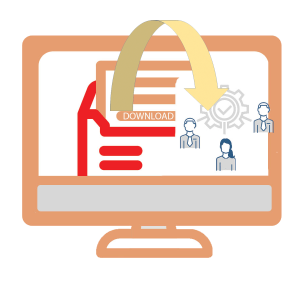In-Person Interactions Have Returned, but Do They Align with Client Desires? Businesses must refresh their lead generation tactics to become more data-oriented and attuned to prospective clients’ preferences. To evolve, organizations should adopt an updated B2B sales strategy that includes:
- Assembling the appropriate team
- Developing clear content that outlines the company’s sector-specific services
- Distributing the content effectively
- Ensuring teams distribute pertinent leads to sales
- Evaluate results at various stages.

The global pandemic drastically changed this dynamic, significantly reducing or eliminating travel for these sales professionals, leaving them with more time but the same, if not higher, sales targets for the upcoming quarter. Even as the world begins adjusting to a new normal, and sales representatives may look forward to resuming their travel schedules, it’s uncertain whether clients are as eager to have them back or if companies will permit vendor visits, considering legal constraints. Notably, over 70% of B2B decision-makers now show a preference for remote interactions or digital self-service.
This changed landscape poses a dilemma: How can B2B salespeople attract new clients who need their solutions when these clients are reluctant to revert to traditional business practices?
In this article, we delve into the successful deployment of a novel digital lead generation approach, resulting in its broad acceptance and the integration of these cutting-edge digital methods.
Current Preferences of the Client

The B2B sales staff needs to interact with potential customers online, where they are most engaged, particularly on LinkedIn and Twitter, in order to generate more leads. In this regard, your sales team ought to endeavor to establish themselves as acknowledged thought leaders in their sector by engaging in innovative and thought-provoking ways in digital dialogues — an obligation that was previously attributed to staff members in the departments of professional services, customer success, and products. Additionally, they ought to use industry-specific and client-specific solution selling strategies, which are becoming more and more important in a digital environment.
The majority of salesmen are unable to realize this vision on their own. It is the organization’s duty to provide the required assistance. B2B sales team leaders, particularly in forward-thinking industries like technology, need to create and supply materials that their teams can use to sell, like white papers, three-year plans for technology transformation, and standard presentation kits. Salespeople can position themselves as thought leaders with the help of this information.
The Updated B2B Sales Strategy
1. **Assemble an Effective Go-to-Market Team**: In today’s competitive landscape, it’s essential for organizations to form a cross-functional team dedicated to establishing standard, globally applicable, repeatable processes. These processes are pivotal for creating go-to-market content through a comprehensive approach. The aim is to streamline these processes to produce a maximum of three industry-specific marketing assets for field use. Incorporating input from regional stakeholders and feedback from global sales and marketing teams in the content creation process is crucial.
2. **Develop Clear, Outcome-Focused Content**: The essence of the content produced by your team should be centered on addressing the challenges clients face, rather than simply highlighting the products being offered. This requires setting up an infrastructure to host such content on internal platforms, with a portion also made available on external social and digital channels via marketing efforts.
3. **Disseminate Content Effectively**: Raising awareness is crucial at this stage. Leadership must actively promote the go-to-market initiative and its content throughout the organization. Following this promotion, it is imperative to make the content readily accessible to the sales team. Sales professionals should then be equipped to efficiently introduce this content to the market, using distribution platforms and possibly sales productivity tools for tracking engagements and performance metrics once the content has been shared.
4. **Lead Sharing Between Demand Generation and Sales**: Sales teams will acquire leads through various actions, such as sending emails with targeted content and sharing it on specific digital media platforms. In situations where prospects are directed to a corporate website that gathers customer data, it’s crucial for the sales leads to ensure this information is communicated to the field team.
5. **Comprehensive Outcome Measurement**: Field representatives need the capability to track the performance of their content comprehensively, including its viewership and influence on deal progressions. The organization should enhance sales content that performs well and eliminate materials that fail to attract interest swiftly. Implementing internal performance indicators for optimizing the quality of content and leads is essential. This final step guarantees that the sales content library is populated exclusively with materials that provide tangible benefits to both clients and the sales team.
Even though every organization is different, the fundamental problem always exists. Sales teams are negotiating a changed environment. By providing better lead generating assistance, businesses may thrive in this new digital age.
